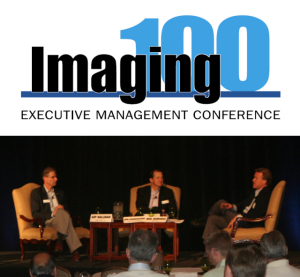Free-Standing Imaging Businesses Face Many Challenges
by
Robert Garment, Executive Editor | April 01, 2009

The CEOs of the
100 Largest
Imaging Centers
met in San Diego
to discuss the state
of the industry
The consensus coming out of the recent Imaging 100 Conference -- attended by the 100 top CEOs in the free-standing imaging business, and hosted by Lincoln Healthcare Events at the Four Seasons Resort in San Diego -- was that their industry is facing some serious headwinds that will be a challenge to navigate. The owners and operators of these Diagnostic Imaging Centers (DICs) recently saw a shakeout in their business as a result of DRA reimbursement cuts. But according to several participants, the DICs got through that round of cuts without too much difficultly, though the overall number of centers did go down.
Additional consolidation appears to be in the cards for the DICs in 2009. A few years ago there were an estimated 10,000 to 11,000 DICs, today the number is around 8,000. Most attendees agreed that number is likely shrink again, but the businesses that survive should be in a good position to profit -- and actually thrive. Those businesses will have made the smart and the tough choices, and will run re-engineered operations.
"You can't just eye-ball your business operations anymore," as one CEO put it, "you have to drill down and look at how you spend every dollar, and find ways to cut costs." Many people shared ways to become more efficient, and said that those efficiencies, once fully in place, would ultimately result in a better business environment.
Another megatrend at play for this healthcare sector is the challenge and promise of hospital relationships. In fact, the title of a popular session at the meeting was, "Hospitals: Friends or Foes?" The impetus behind the Medicare cuts to DIC reimbursement in 2007 was in part to put imaging center payments on a level playing field with hospitals, which must support ER departments and care for the uninsured. Of course, private payers such as insurers follow the lead of CMS in setting reimbursement rates. And the DIC industry is also anticipating another round of cuts.
In addition, insurers are turning to radiology benefits managers (RBMs) to authorize the appropriateness of procedures and validate equipment and operations. This layer of bureaucracy is another stop light on the road to profitability. Other factors limiting growth include the current recession and credit crunch, curtailing equipment and new center investment.
Light at the End of the Gantry
At the same time, hospitals are increasingly finding partnerships with free-standing imaging centers and that model may guide future survival strategies for both settings. All parties know that imaging is a profit center among healthcare services.
